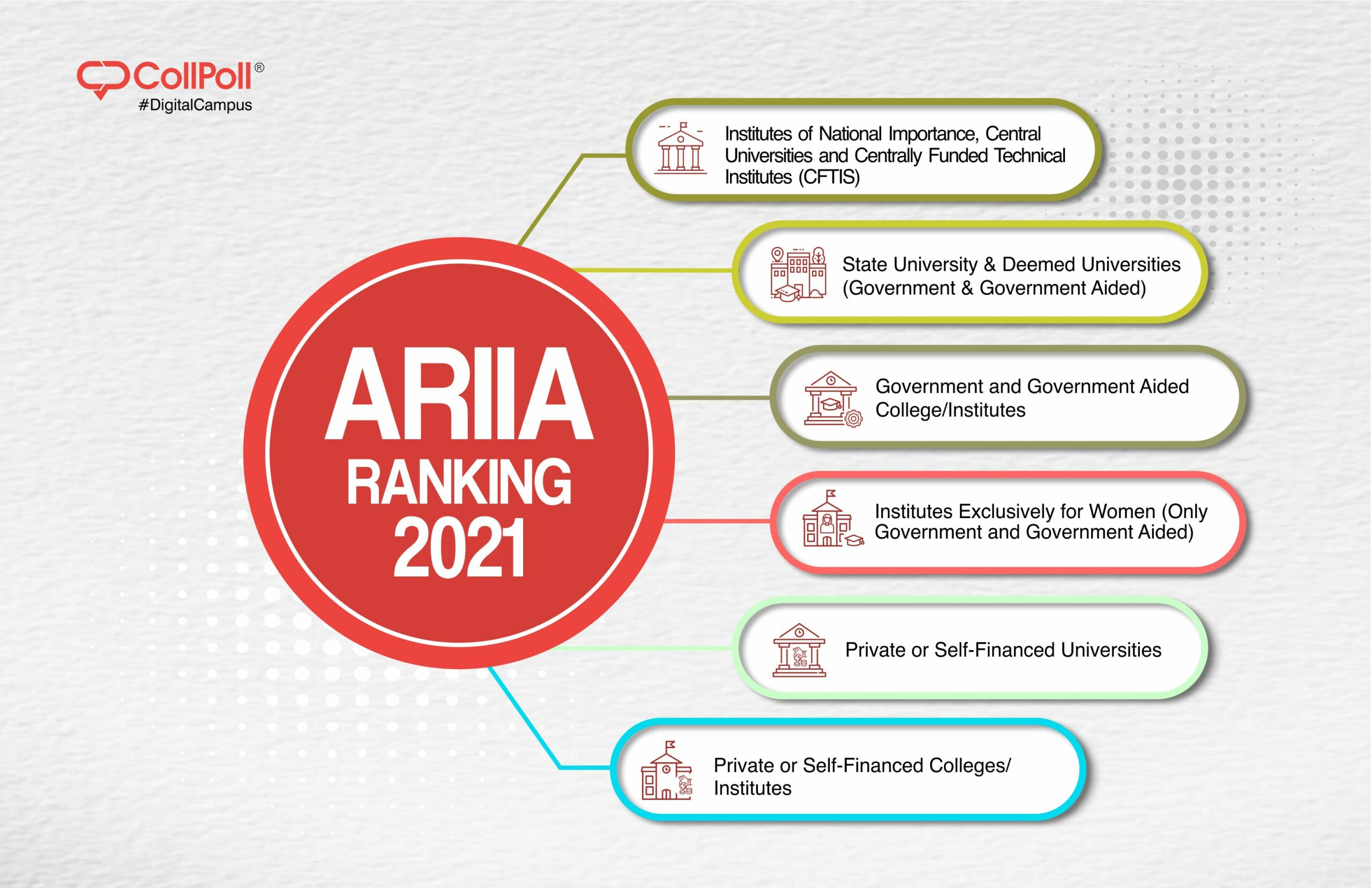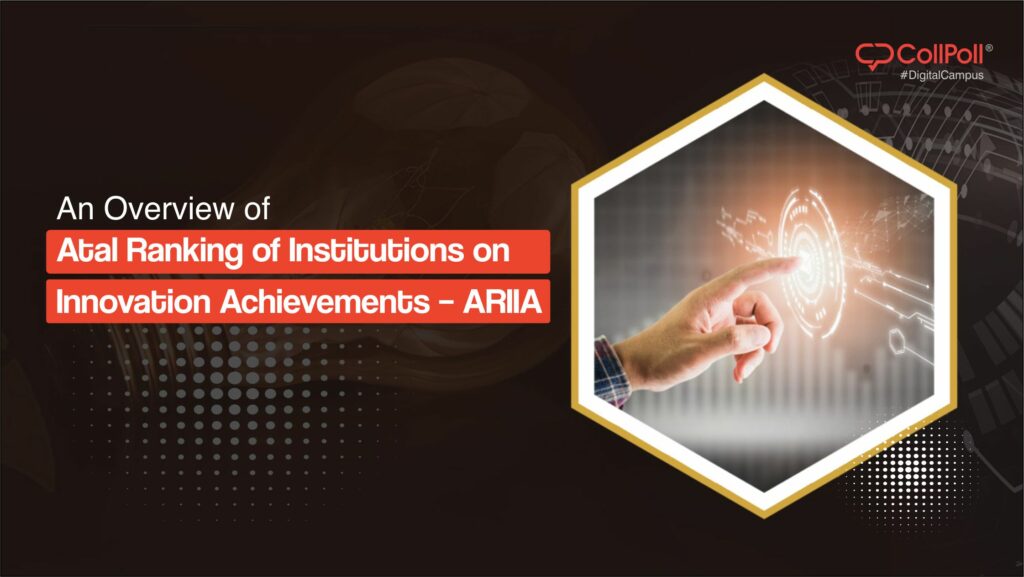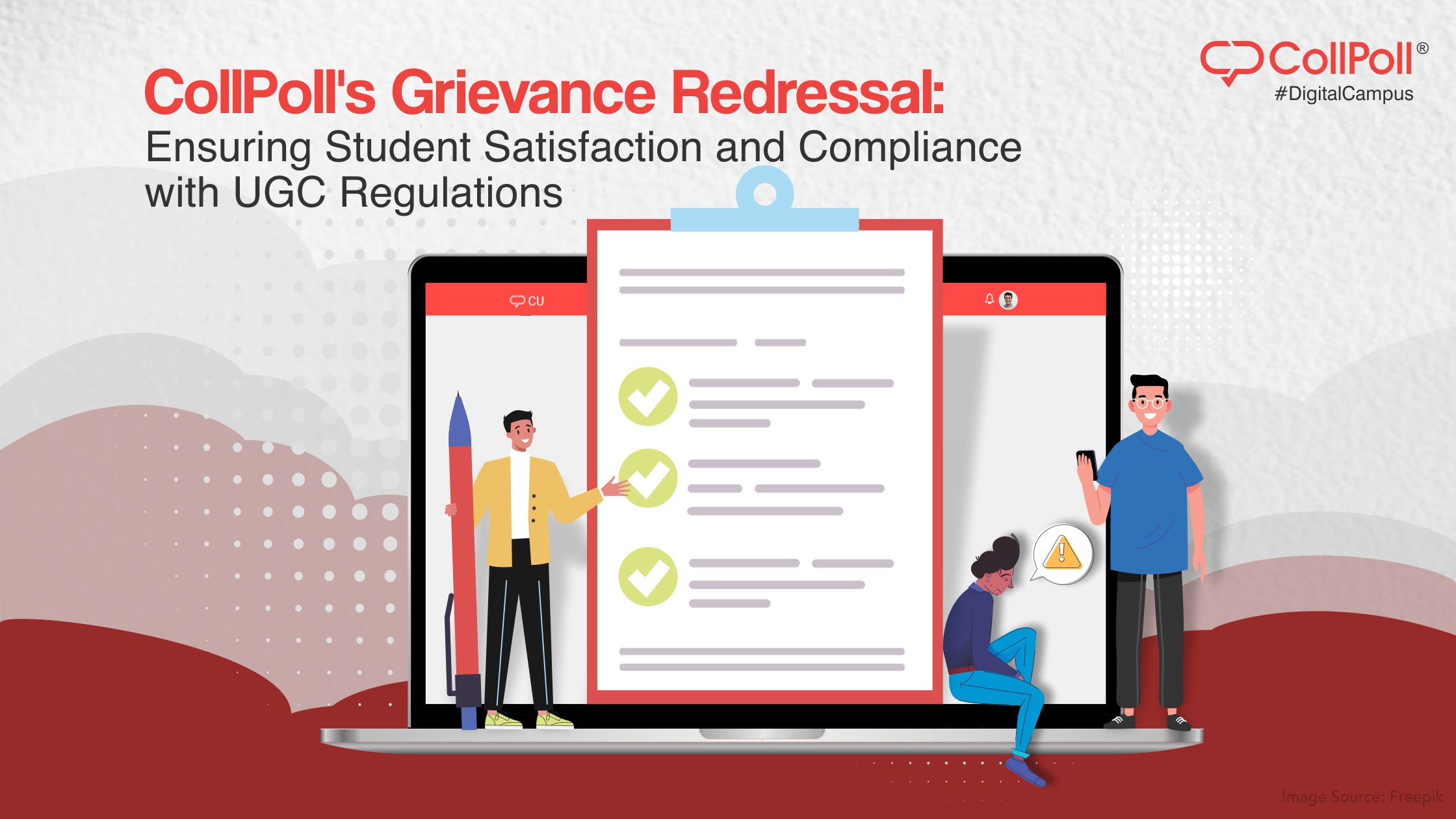Over the last few years, India has emerged as one of the world’s leading innovators and has become the third-largest startup centre in the world. Higher education institutions and the nation’s youth can play a key role in transforming India into an innovative and sustainable ecosystem. By establishing a system for research and development, every higher education institution can inspire, encourage, and nurture young minds. Consequently, it allows them to explore new ideas and transform them into something extraordinary.
Atal Ranking of Institutions on Innovation Achievements (ARIIA) is an initiative of the Ministry of Education (MoE), Govt. of India that aims to systematically rank all major universities and higher educational institutions in India based on “Innovation and Entrepreneurship Development” indicators.
What is ARIIA?
The ARIIA is a national ranking system initiated by the Ministry of Education in 2018 to rank higher education institutions (HEIs) on different indicators of innovation. According to the Ministry, the ARIIA ranking aims to inspire Indian institutions to re-orient their mindsets and build ecosystems to enhance high-quality research, innovation, and entrepreneurship.
One way to achieve India’s goal of becoming a global innovation hub is through innovation in its higher education institutions. The ARIIA ranking thus highlights those institutions that align themselves with the responsibility of building a sustainable innovation ecosystem.
The government of India seeks to establish a vibrant entrepreneurial ecosystem at technical institutes in order to nurture tech-driven startups.
The Features of ARIIA
- The process and method to calculate ARIIA ranking cover all the crucial parameters, aspects, and indicators that are used globally to rank institutes for innovation outputs.
- It also includes factors specific to the Indian education system, considering the current status and norms.
- The ARIIA parameters are organised into seven broad categories, which are further divided into suitable sub-headings. Each broad indicator and sub-head has been assigned an appropriate weight.
- The ranking system also identifies the relevant data required to measure each sub-head performance score, ensuring transparency. The focus is on collecting data that institutions can easily provide or gather from a third party, and it should be easily verifiable if needed. The final score is calculated according to the weightage assigned to every indicator or head.
- The total score can reach the maximum value of 100.
- The colleges are then ranked according to the score they have achieved.
Parameters Used in the ARIIA Ranking
Indian institutions are certain to be inspired by the ARIIA ranking to reorient their mindset and build ecosystems that attract and encourage high-quality research, innovation, and entrepreneurship. The following six parameters are considered:

1. Mindset Development
This involved developing an innovative and entrepreneurial mindset through a series of activities.
- Involvement of HEIs in co-curricular events related to Innovation and Entrepreneurship (I&E).
- I&E-related co-curricular events organized by external organizations where students/faculty representatives of HEI participated.
- Award-winning student and faculty innovations at the State/National/International level in I&E-related events.
2. Teaching & Learning
Academic Programmes related to Innovation & Entrepreneurship (I&E) and IPR offered by the HEIs.
- Number of full-fledged programmes/courses in Innovation / Entrepreneurship / Intellectual Property offered by the HEI (Diploma/ UG/ PG/ PhD).
- Short-term Certificate courses or Elective group(s)/ Major or Minor Specializations/ Core Credit courses offered by the HEI in Innovation and Entrepreneurship (I&E) of a minimum of 30 contact hours of duration.
- Number of I&E-related MDP, EDP, FDP, and Employment Generation Skill Development Programs conducted by HEI (Approved by Regulatory bodies of HEIs or other State and Central government agencies) of a minimum of 30 contact hours of duration.
- Faculty members who have completed specialized training programmes of I&E (MDP, EDP, FDP, Certificate course of minimum 30 contact hours of duration) conducted by State and Central government agencies (for example AICTE, MIC, Ministry of MSME etc.), knowledge agencies etc.
- HEI’s entrepreneurial skills-building/employment-generating training programmes for external participants (local residents, community members, alumni etc.).
- The number of full-time faculty members with an undergraduate, postgraduate, or PhD degree in entrepreneurship/innovation/IPR and (or)received training on I&E or IPR training.
3. Infrastructure and Facilities
Promoting innovation & entrepreneurship with dedicated infrastructure at HEIs.
- Active Ideas/Innovation centric Student Clubs in the HEI with access to co-working space/ work-stations for students with facilities & equipment available for I&E activities.
- Innovative, entrepreneurial, and intellectual property (IPR) infrastructure and facilities at HEIs.
- The existence of pre-incubation centres such as Tinker Lab/ EDC/ IEDC/ New Gen IEDC/ etc. with minimum space of>= 600 sq. ft. floor area.
- Existence of an Incubation Unit with minimum space of >= 1500 sq. ft. floor area.
- The availability of a Research Park/Innovation Park with a minimum space of >= 5000 sq. ft. Floor area.
- The presence of a Centre of Excellence with Advance Tools & Equipment with a minimum space of >= 1000 sq. ft.
- Existence of an IPR Cell / Patent Facilitation Unit / Technology Transfer Centre at the institute.
- In-depth evaluation of I&E activities by senior professors/heads of the institute.
- Empaneled external experts/agencies for mentorship regarding IPR, innovation development and enterprise development.
- Number of faculty members/ staff of the HEI deputed on committees of other HEIs to mentor and support the establishment of their I&E eco-system.

4. Innovations Development
Generation of Innovations/ ideas with the support of HEI and recognition received.
- Innovations with a TRL of 0-3 and/or a number of non-technical innovations (scouted and evaluated) registered with the departments of HEI/pre-incubation/Incubation centre.
- An estimated number of innovations in TRL 4-6.
- The number of innovations within TRL 7-9.
- Implementation of ideas or innovative projects in the community/social innovations.
- Various innovative projects/TRLs/social innovations implemented with financial support from HEIs.
- Academic awards won by students and faculty innovations at State/National/International Level in I&E-related events.
5. Startups Established
Ventures established with the support of the HEIs & recognitions received.
- Start-ups with CIN/Entrepreneurial Ventures with at least GST number started by students/faculties/Staff/Alumni and facilitated by HEIs/EDC/Pre-incubation/Incubation/Research Park etc.
- Start-ups with CINs/Entrepreneurship Ventures with GST numbers started by external beneficiaries (i.e., excluding Student, Faculty & Staff) who had received Employment Generating Skill Training Program conducted by the HEI/EDC/Pre-incubation/ Incubation.
- The number of faculty members who are founders or co-founders of DIN.
- Number of start-up companies with 50 lakhs in annual turnover or 10 employees.
6. Collaboration & Investment
Angel and VC funds/investments mobilized to support innovation & startups incubated at HEIs with collaborations and co-creations for I&E projects.
- The total amount raised by innovators pre-incubated/incubated at HEI from Angel/VC Fund/High Net worth Individual (HNI).
- Funding raised by HEI-incubated start-ups from Angel /VC Funds/High Net worth Individuals (HNI).
- Total amount of Credit/Loans from financial institutions that were facilitated by HEIs for innovators/start-ups.
- Collaborations with incubation units outside the HEI, either as a provider or a recipient of incubator support.
- The number of collaborations with other HEIs as mentors or mentees to promote I&E on campus.
- Collaborations with start-ups/industry associations/knowledge agencies to promote I&E activities and/or internship opportunities.
7. IP and Commercialization
Intellectual Property (IP), generation and commercialization.
- Published research papers (Student/Faculty) with keywords Innovation and Entrepreneurship in Scopus journals during the AY 2019-20
- Number of copyrights/designs applied for during the FY 2019-20.
- Number of patent applications filed and publications during the FY 2019-20.
- Number of Patents Granted (last 3 FYs: 2017-18, 2018-19, 2019-20).
- The number of patents held by Pre-Incubated Innovations/Incubated Startups (last 3 FYs: 2017-18, 2018- 19, 2019-20)).
- Count of IPs Commercialized and Technologies Transferred during the FY 2019-20.
8. Expenses and Revenue
The annual budget for promoting and supporting I&E activities consist of – total expenses towards I&E and IPR support activities with total revenue generated by HEI from incubation services to startups and commercialization of IP and innovations.
- The amount spent on events.
- The amount spent on I&E events conducted by external organizations for students and faculty.
- The cost of establishing, maintaining, and operating the Pre-Incubation and/or Incubation infrastructure (capital expenditure + operational expenditure).
- Amount disbursed by HEI from its own funds to innovation/entrepreneurial ventures as seed funds/grants.
- Total Seed Fund/Grant received from external sources disbursed to Start-ups (Financial Fields of line items entered in 4 & 5).
- Grants and funds received from authentic sources, such as government, non-government, CSR bodies, etc. towards promoting and supporting innovation, IPR, Start-ups and pre-incubation/incubation activities in the campus.
- The total revenue from incubator services provided by HEIs to start-ups and innovators (training and skill + mentoring + office space and rent). It excludes fees earned for offering general consulting services offered and training conducted by HEIs.
- Revenue generated by HEIs from IP licensing/commercialization (It excludes IP commercialization made by incubated start-ups/ Innovators).
9. Initiatives of MoE (Ministry of Education)
Participation of HEI in I&E Initiative of MoE.
- National innovation and start-up policies have been adopted at the HEI.
- The establishment of the Institution’s Innovation Council (IIC) at HEI.
- Trained HEI Innovation Ambassadors.
- Participation in Smart India Hackathon (SIH).
- Facilitated Registration of startups/ Technologies developed from HEIs in YUKTI 2.0 (Young India combating COVID with Knowledge, Technology and Innovation) portal of MIC.
- Participation of Students from the HEI in National Education Alliance of Technology (NEAT) courses.
According to the ARIIA ranking, nine primary parameters are considered, each having a different weight:
| S.No. | Indicators | Non-Technical HEI | Technical HEI |
| 1. | Developing an Innovative and Entrepreneurial Mindset through | 8 | 4 |
| 2. | Teaching and Learning | 10 | 6 |
| 3. | Infrastructure & Facilities | 13 | 13 |
| 4. | Generation of Innovations/ ideas with the support of HEI | 13 | 13 |
| 5. | Startups Established | 3 | 5 |
| 6. | Collaboration for & Co-Creation of I & E initiatives | 8 | 5 |
| 7. | Intellectual Property (IP), Generation and Commercialization | 14 | 19 |
| 8. | Expenses and Revenue | 8 | 8 |
| 9. | Initiatives of MoE | 11 | 9 |
In addition to quantity, ARIIA will focus on the quality of innovations and will attempt to determine the true impact of these innovations both nationally and internationally. Furthermore, ARIIA will set the tone and direction for institutions to become more innovative and competitive in the future.
Rank Categorisation

ARIIA college ranking includes two major categories for the classification of the institutes:
1. Publicly Funded Institutions
- Institutes of National Importance, Central Universities and Centrally Funded Technical Institutes (CFTIS)
- State University & Deemed Universities (Government & Government Aided)
- Government and Government Aided College/Institutes
- Institutes Exclusively for Women (Only Government and Government Aided)
2. Private or Self-Financed Institutions
- Private or Self-Financed Universities
- Private or Self-Financed Colleges/Institutes
Major Indicators for Consideration
In HEIs, innovation and startup ecosystems will be assessed based on seven parameters with certain weightings.
| S.No. | Key Indicators | Weightage |
| 1. | Budget, Expenses to Support & Revenue Generated | 20 Marks |
| 2. | Infrastructures & Facilities to Support Innovations and Start-ups | 10 Marks |
| 3. | Awareness Activities for Promoting Idea Generation and Innovation | 20 Marks |
| 4. | Promotion and Supporting Entrepreneurship Development | 20 Marks |
| 5. | Intellectual Property (IP) Generation, Technology Transfer and Commercialization | 14 Marks |
| 6. | Innovative Learning Methods & Courses | 10 Marks |
| 7. | Innovations in Governance of the Institution | 6 Marks |
Source: ARIIA | Atal Ranking of Institutions on Innovation Achievements
Elaborating the Objectives of the ARIIA Ranking System
ARIIA aims to improve India’s ranking in the Global Innovation Index (GII) and bring it into the top 30 in five years (by 2025). The other objectives include:
- To direct HEIs towards focusing on establishing a strong startup ecosystem on campus.
- The following parameters are used to measure the innovation and startup ecosystem:
- Input
- Process
- Output and
- Outcomes
- The aim is to increase the quality aspects of startup ecosystems and a quantitative evaluation of such ecosystems is conducted.
- Innovations and startups from HEIs are measured according to their market and societal impacts.
Summing Up!
A look at the above categories and classifications shows how meticulously the ARIIA ranking system works. For universities, colleges, and higher education institutions to rank well and climb high on the list, they must be thorough and careful while incorporating innovation. For this, you need a comprehensive academic solution that integrates business innovation seamlessly with education.
If you are a higher education institution seeking accreditation and ranking, you can manage the process with CollPoll. We can help you gain accreditation and recognition as an institution of higher learning by guiding you through the entire process. Get a Personalised Demo of CollPoll to know more!






